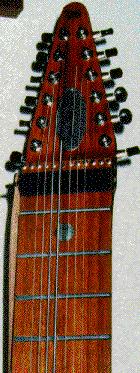|
"Music scholars divide orchestra instruments
into five
families:
|
To Dave Barry's classification I'd like to
add:
|
| I usually play bari sax, bass clarinet,
flutes, and contrabass
sarrusophone (in jazz ensembles), or bassoon (in orchestras), or
contrabass
clarinets (Eb and Bb) and bass sarrusophone (in wind ensembles), and
have
played contrabassoon in the past (Holst's "The Planets", Brahms' 1st).
I also play bass guitar and Chapman
Stick®.
In flute choirs, I like to play alto and/or bass.
I've started playing the renaissance alto/tenor and great bass racketts . The rackett is an interesting instrument in itself. It has nine parallel (cylindrical) bores through the body, joined by caps at each end. The effective length of the bore is thus about nine times the size of the instrument: my great bass racket is about twelve inches tall, but plays as low as a contrabassoon. Its double reed is immense. |
 |
| I've also been working on cortol, rauschpfieff, shawm, bass kortholt, and great bass sordune, along with a few crumhorns (I'm still building the alto and bass). |
 "Mentioned"
"Mentioned"